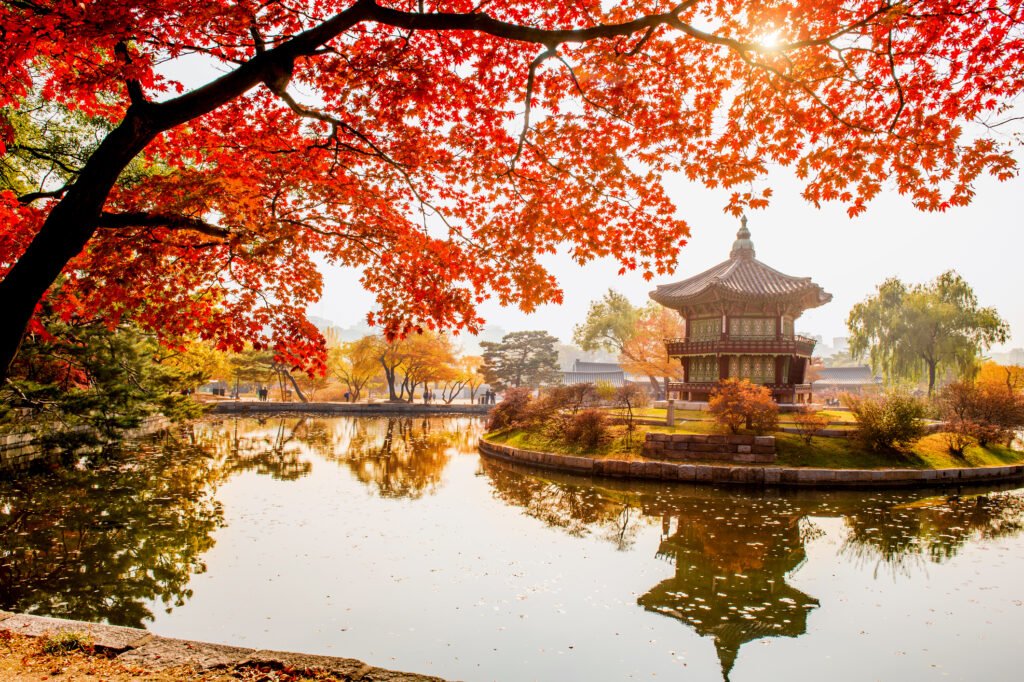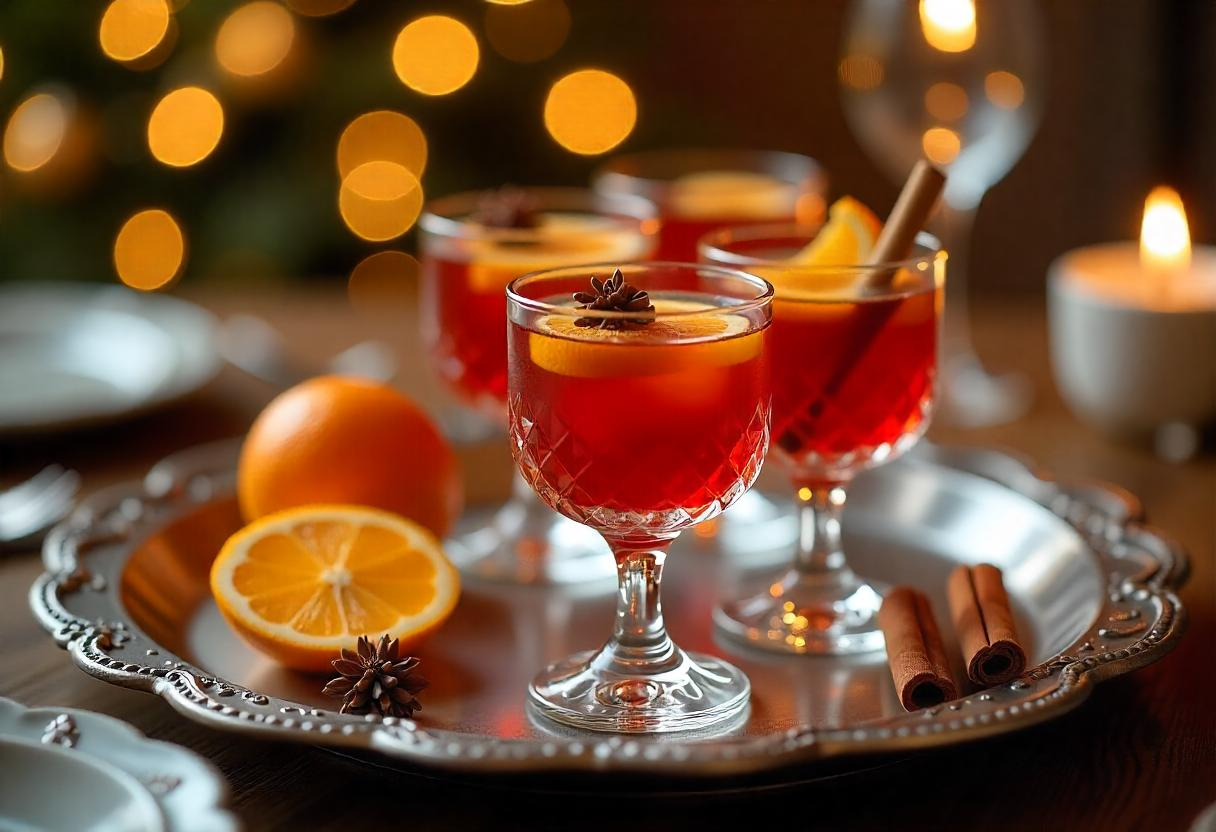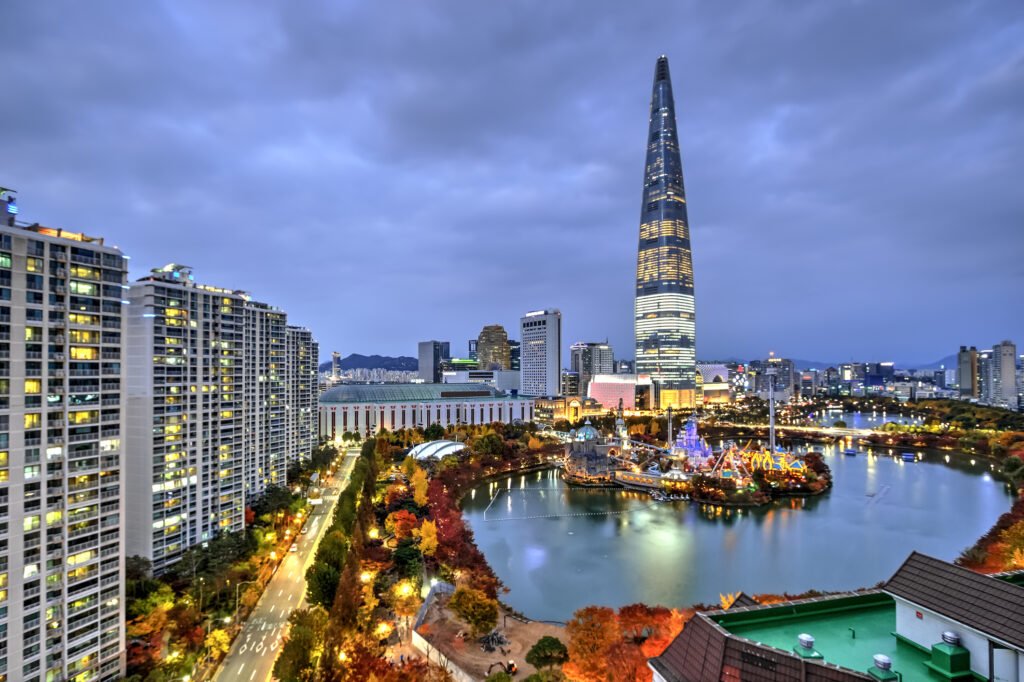
Nestled on the Korean Peninsula, Seoul stands as a testament to the enduring spirit of Korean culture and a vibrant hub of culinary innovation. This dynamic city has emerged as one of Asia’s premier culinary destinations, captivating food lovers from around the world with its bold flavors, fresh local ingredients, and a unique blend of tradition and trendsetting gastronomy. Let’s explore why Seoul deserves its place among Asia’s top culinary locations, delve into its rich history, and discover the gastronomic adventures awaiting food enthusiasts in this enchanting metropolis.
Why Seoul Ranks Among Asia’s Best Culinary Locations
⁎ Rich Culinary Heritage: Seoul’s cuisine is deeply rooted in Korean traditions, offering a unique blend of flavors that have been perfected over centuries. The city’s gastronomy reflects influences from its royal court cuisine, regional specialties, and Buddhist vegetarian traditions.
⁎ Fermentation Expertise: Korean cuisine relies heavily on fermentation techniques, resulting in dishes with complex and umami-rich flavors. Kimchi, gochujang, and doenjang are just a few examples of fermented ingredients that are essential to Seoul’s food culture.
⁎ Fresh, Seasonal Ingredients: The city benefits from its proximity to fertile agricultural lands and the coast, providing access to exceptional produce, meats, and seafood. Seasonal ingredients are highly valued in Korean cuisine, ensuring that dishes are at their peak flavor.
⁎ Innovative Dining Scene: Seoul is a city that embraces culinary innovation. While respecting tradition, Seoul’s chefs are known for pushing boundaries, creating exciting new interpretations of classic dishes.
⁎ K-Food Wave: The global popularity of Korean culture, including K-pop, K-dramas, and Korean beauty products, has also contributed to the rise of Korean cuisine, making Seoul a must-visit destination for food lovers.
⁎ Street Food Paradise: Seoul offers a vibrant street food scene, providing affordable and delicious options for locals and tourists alike. From tteokbokki to Korean fried chicken, the streets of Seoul are a feast for the senses.
⁎ Diverse Dining Options: From humble street food stalls to Michelin-starred restaurants, Seoul caters to all tastes and budgets, offering a wide range of dining experiences.
A Brief History of Seoul’s Culinary Scene
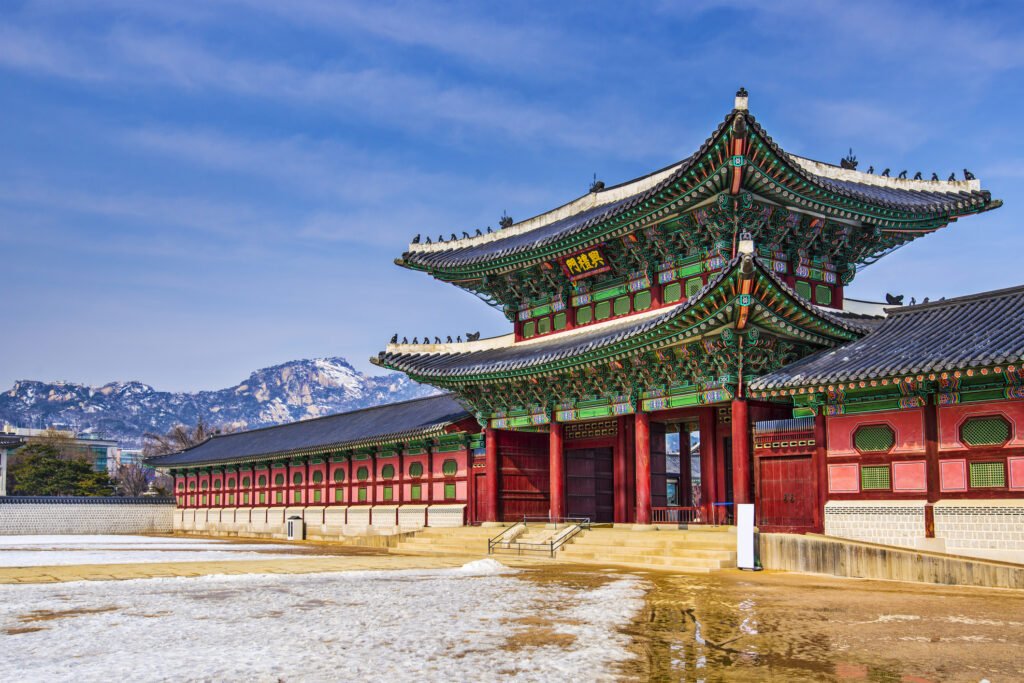
⁎ Seoul’s culinary history is deeply intertwined with its role as the capital of Korea for over 600 years. As the center of political power and cultural influence, Seoul attracted culinary talent from across the peninsula, resulting in a diverse and refined food culture.
⁎ The Joseon Dynasty (1392-1910) saw the development of Korean royal court cuisine, known as “gungjung eumsik.” This elaborate style of dining emphasized meticulous preparation, exquisite presentation, and the use of the finest ingredients. Many of the dishes and techniques from royal court cuisine have influenced modern Seoul cuisine.
⁎ The influence of Confucianism and Buddhism also shaped Seoul’s culinary traditions. Vegetarian dishes, prepared with mindfulness and respect for nature, became an important part of temple cuisine.
⁎ During the Japanese colonial period (1910-1945), Korean cuisine experienced both challenges and changes. While the Japanese imposed restrictions on traditional Korean practices, they also introduced new ingredients and cooking techniques.
⁎ The Korean War (1950-1953) had a devastating impact on Seoul, but the city quickly rebuilt and its culinary scene flourished. The post-war era saw the rise of new dishes and a growing appreciation for traditional Korean flavors.
⁎ In recent decades, Seoul has experienced a culinary renaissance. While maintaining deep respect for traditional flavors and techniques, the city’s chefs have been innovating and elevating Korean cuisine to new heights. This blend of tradition and innovation has solidified Seoul’s status as a top destination for food lovers from around the world.
Culinary Adventures in Seoul
⁎ Street Food Exploration in Myeongdong: Dive into the bustling streets of Myeongdong, sampling a wide variety of Korean street food staples such as tteokbokki, Korean fried chicken, and gyeranppang (egg bread).
⁎ Gourmet Cooking Class: For the hands-on culinary tourist, many courses exist that can take them deep into the heart of Seoul cuisine and show visitors the way to prepare local dishes.
⁎ Hidden Gem Exploration: Explore side streets that offer fresh unique takes on Korean flavors and dishes.
⁎ Noryangjin Fish Market Visit: Experience the hustle and bustle of the Noryangjin Fish Market, where you can witness the daily auctions and sample fresh sashimi and seafood dishes.
⁎ Temple Stay and Vegetarian Cuisine: Immerse yourself in Korean Buddhist culture by staying at a temple and enjoying a traditional vegetarian meal.
⁎ Modern Fusion Food: Explore the many restaurants offering new twists on Korean cuisine, using flavors from other regions of the world to create something truly unique.
Top Drinking Tours and Experiences in Seoul
Seoul offers a vibrant and immersive experience for those interested in exploring Korean alcohol culture. Here are some highlights of the best tours and activities:
1. Traditional Alcohol Experiences
Makgeolli and Brewery Tours: Learn to craft makgeolli (Korean rice wine) in traditional breweries. These tours often include tastings of various Korean alcohols like soju, cheong-ju, and unfiltered makgeolli, guided by certified sommeliers14.
K-Liquor Making Class: Held at the “Traditional Alcohol Gallery: The Sool,” this program allows participants to create traditional Korean alcohol while learning about its history and cultural significance4.
2. Culinary and Drinking Tours
Drinking and Eating Through the Alleys of Seoul: A five-hour guided tour that pairs local dishes with traditional drinks like makgeolli while exploring vibrant markets such as Gwangjang Market16.
Korean BBQ and Market Tours: Combine unlimited local beers, soju, and makgeolli with charcoal-grilled pork, aged kimchi, and savory pancakes in the Mapo district1.
3. Nightlife and Pub Crawls
Seoul Pub Crawl: A guided 4-hour tour through popular bars and clubs in areas like Itaewon and Hongdae. Includes free shots, discounted drinks, and skip-the-line access to venues13.
Korean Drinking Games Night: A fun two-hour tour where participants can enjoy university-style drinking games while sipping on soju bombs and somaek (soju mixed with beer)13.
4. Festivals and Events
Korean Sool Grand Festival: Held annually in November, this event showcases over 100 types of traditional Korean alcoholic beverages. It includes workshops, tastings, auctions of limited-edition liquors, and seminars on industry trends2.
5. Specialty Tasting Tours
Soju Tasting at Distilleries: Group tours focused on sampling premium soju varieties while learning about the distillation process8.
Gastro Tour Seoul: A curated experience combining traditional Korean food with regional alcoholic drinks like makgeolli5.
Seoul’s drinking tours provide a perfect blend of cultural immersion, culinary exploration, and nightlife fun, making them a must for visitors seeking authentic Korean experiences.
10 Iconic Recipes from Seoul
1. Kimchi: Fermented cabbage seasoned with chili powder, garlic, ginger, and other spices. It’s a staple of every Korean meal.
2. Bibimbap: Mixed rice with vegetables, meat, and a fried egg, often served with gochujang (chili paste).
3.Korean Fried Chicken: A world-renowned local dish that has won many awards and gained lots of fans.
4. Bulgogi: Thinly sliced marinated beef that is then grilled.
5. Tteokbokki: Chewy rice cakes simmered in a spicy gochujang sauce with fish cakes and vegetables, is often eaten as a street food.
6. Samgyeopsal: Grilled pork belly, eaten raw with local spices.
7. Galbijjim: Braised short ribs in a savory sweet brown gravy.
8. Japchae: Glass noodles, stir fried with various vegetables and meats. This is often served with ganjang sauce.
9. Korean Stew (jjigae) – kimchi jjigae, sundubu jjigae, doenjang jjigae: There are too many unique stews to pick from!
10. Kimbap: Seaweed rolls that offer a diverse range of ingredients rolled up.
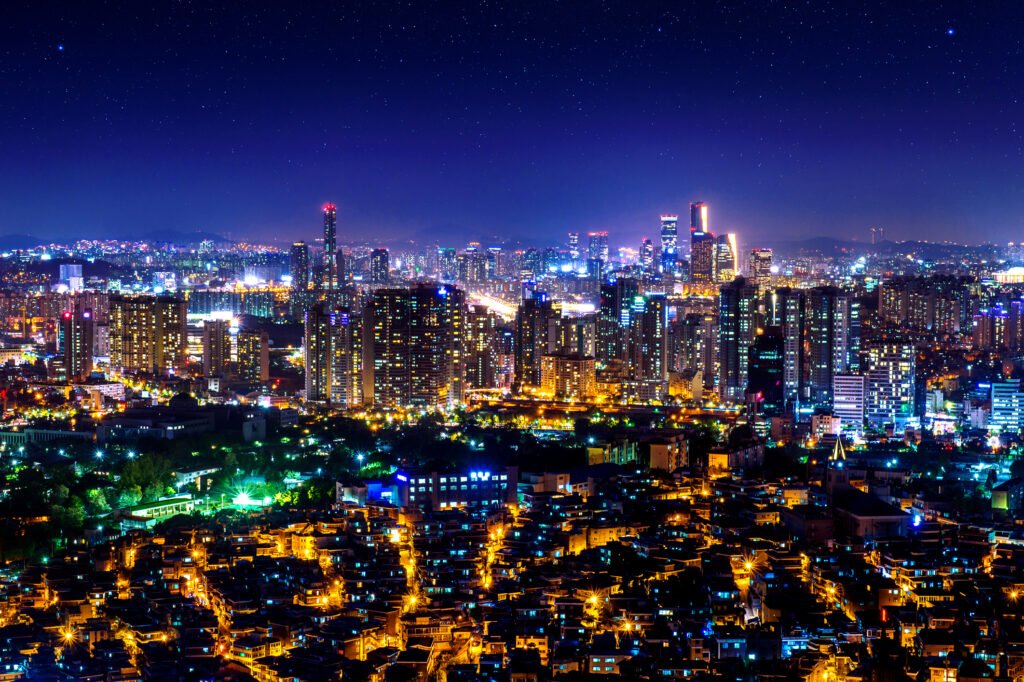
Seoul’s culinary scene is a testament to the city’s rich cultural heritage, innovative spirit, and access to exceptional local ingredients. From humble street food stalls to world-renowned Michelin-starred establishments, Seoul offers a gastronomic journey that captivates food lovers from around the globe.
As you explore this vibrant metropolis, you’ll discover that in Seoul, food is not just sustenance – it’s a way of life, a celebration of flavor, and a gateway to understanding the heart and soul of Korean culture. Whether you’re savoring a perfectly prepared bibimbap, indulging in crispy Korean fried chicken, or exploring the bustling street food markets, Seoul promises an unforgettable culinary adventure.
The city’s ability to honor its culinary traditions while embracing innovation ensures that Seoul will continue to be a top destination for food enthusiasts for years to come. With its unique blend of modern and traditional influences, Seoul offers a feast for all the senses, making it a must-visit destination for anyone seeking to experience the true depth and diversity of Korean cuisine. Take a day to explore some areas outside of the city to get more local takes on Korean food.
* Suwon: A city to the south of Seoul known for its architecture and unique dishes.
* Demilitarized Zone (DMZ): For those willing to take a day trip, you can see the area near North Korea and sample food that is exclusive to that region.
As you delve deeper into Seoul’s food culture, you’ll discover that it’s not just about the flavors, but also about the people and traditions behind them. The region’s agricultural heritage has fostered a deep respect for ingredients and a farm-to-table ethos that predates the modern movement. Many restaurants and markets in Seoul maintain close relationships with local farmers and producers, ensuring that diners experience the freshest, most authentic flavors of the region. In particular, make it a point to check out many of the banchan restaurants throughout Seoul. They add unique spices and flavors to their banchan that give diners new experiences each time.
In conclusion, Seoul offers a culinary experience that is both deeply rooted in tradition and excitingly innovative. Its unique blend of historical influences, combined with an abundance of high-quality local ingredients, creates a gastronomic landscape that is truly one-of-a-kind. Whether you’re a seasoned foodie or simply someone who appreciates good eating, Seoul promises a culinary adventure that will tantalize your taste buds and leave you with lasting memories of one of Asia’s greatest food cities.
